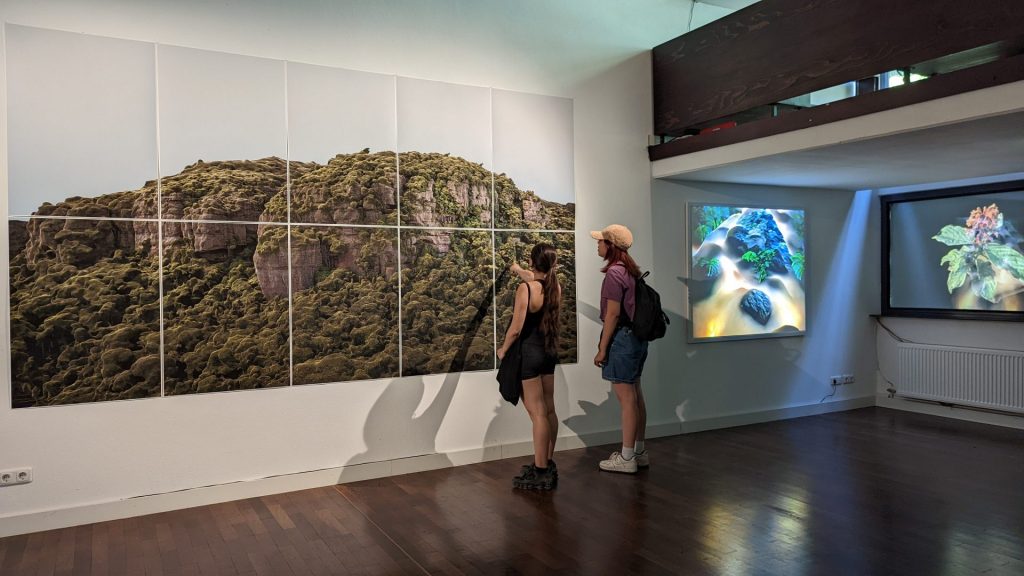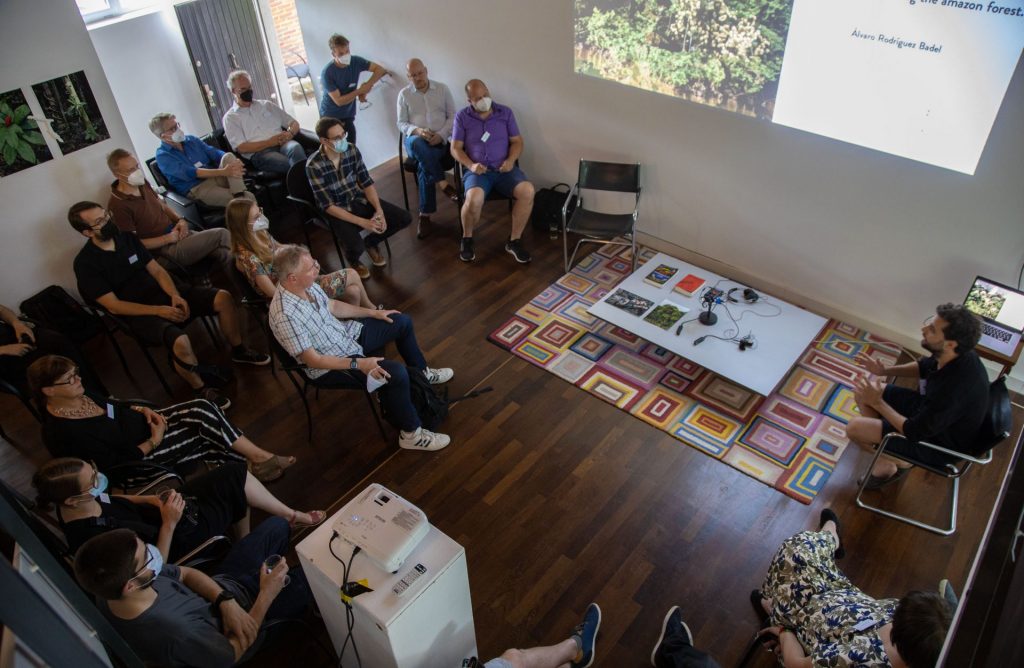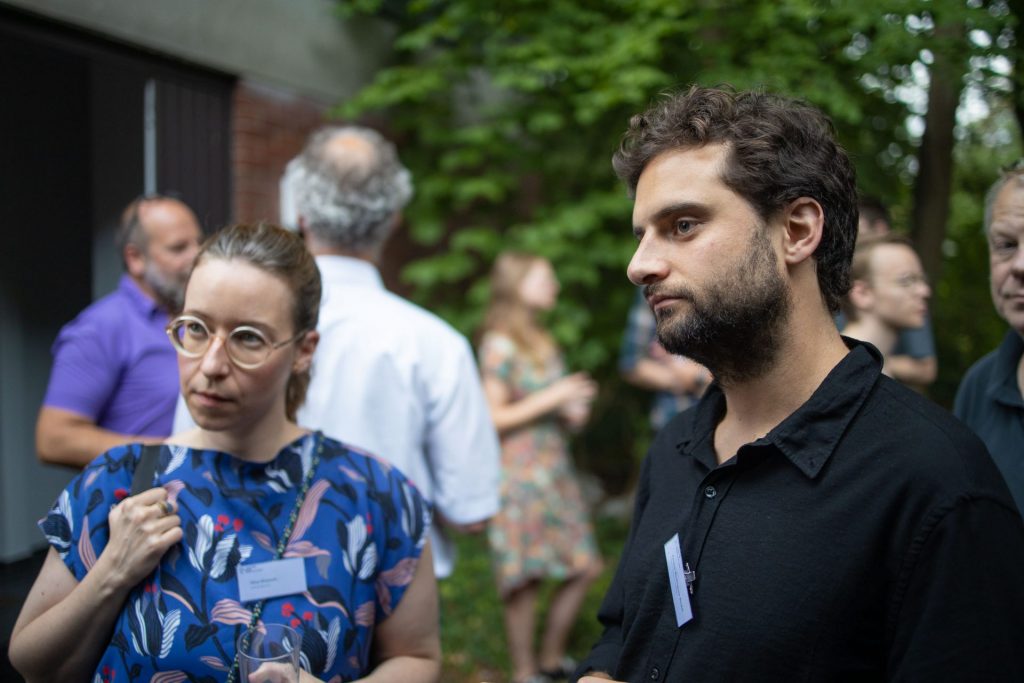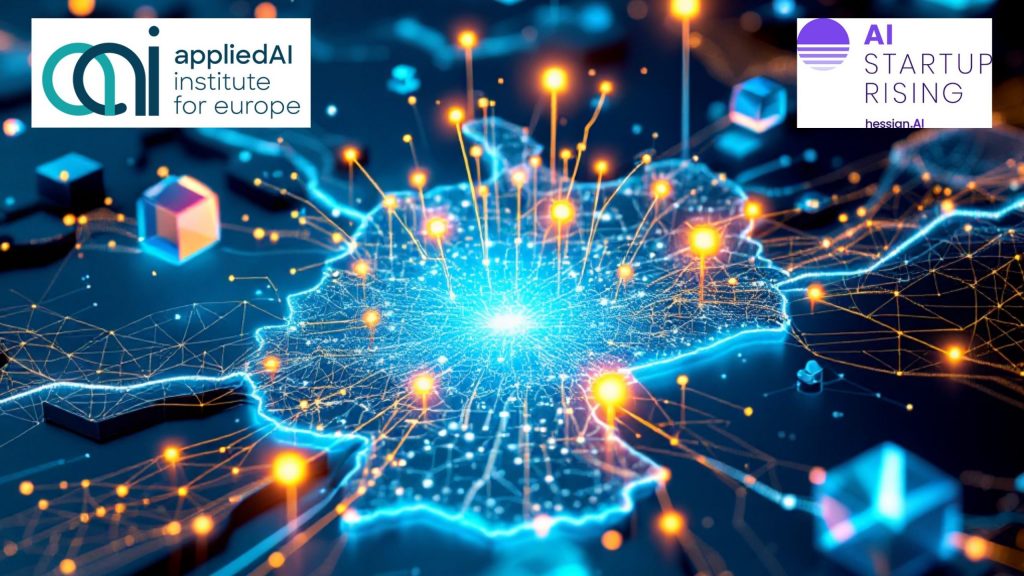
Where Technology and Aesthetics Come Together: “A Breath At The Edge Of Future”
Visitors to the exhibition of artist Álvaro Rodriguez Badel at the Rosenhöhe in Darmstadt were able to catch a whiff of the future. Together with hessian.AI, the Colombian scholarship holder worked for six weeks on his exhibits combining artificial intelligence and art, which he presented in his studio on the Rosenhöhe and in the course of the vernissage on the Osthang.
Among almost 70 submissions, the association Kultur einer Digitalstadt e.V. and the Hessian Center for Artificial Intelligence (hessian.AI) selected the outstanding artist Álvaro Rodriguez Badel for an Artist-in-Science Residency at the Rosenhöhe in Darmstadt. For six weeks, the Colombian artist lived and worked at Rosenhöhe in LEW1, turning his 3D data collected in Chiribiquete National Park into art.
His fellowship came to a successful conclusion in the exhibition “A Breath At The Edge Of Future.”
Without a doubt, one of the greatest enrichments of my residency was the opportunity to gain access to knowledge, resources, and people that I would not otherwise have access to. This led to new perspectives on my work as well as opportunities for personal and professional growth. Also, on a more conceptual level, I was able to participate in conversations about AI issues and understand what AI really is, how it is used, and what its limitations are.
Álvaro Rodriguez Badel



In collaboration with experts from the scientific community, Álvaro Rodriguez Badel has placed the Amazon rainforest, in all its naturalness but nonetheless the fragility of this ecosystem, at the center of his work.
The young Colombian processes the multimodal data that the artist collected prior to his residency in Darmstadt in such a way that, with the use of artificial intelligence, they allow us to rethink the relationship between technology, mankind, and nature and promote this into transdisciplinary public discourse: in order to make science visible and to communicate it, accessible and appealing media are necessary; art can act here as a mediator between the worlds.
But how does this kind of art actually work? 3D models are calculated from the photographs fed in, which train a neural network. This in turn can generate new 3D models. The AI fills in the gaps in the photographic representation data, e.g. that certain objects are obscured by others and are not visible to the camera. The AI enriches these gaps with the data provided to it by the artist. As a result, images are created that do not exist as such in reality, which at first glance appear organically abstract and unnatural. Artificial Intelligence knows no rainforest and has never seen it “with its own eyes”. Thus, it makes use of the colors, shapes and textures conveyed to it by the numerous photographs of the national park.



In this process, however, Álvaro Rodriguez Badel does not see AI as a mere tool that he can use step by step, but rather as a “partner” that influences his work with its obstinacy and produces entirely new art of its own. The result of the first Artist-in-Science-Residence shows that technology can enrich and expand the mind and consciousness in an aesthetic way, opening up a view of the intelligences around us, in this case the intelligence of nature. Integrating this into models at some point should be a goal of future AI research.
Art is – as the name suggests – something artificial, that is, man-made. So is artificial intelligence, of course. Moreover, AI learns according to models of our brain. Consequently, AI, like us humans, has the potential to create worlds from what we have learned that are not real and that can expand our consciousness. And that is ultimately nothing other than what art does.
Wolfgang Stille
hessian.AI is strongly interested in continuing the collaboration. In addition to the goal of advancing cutting-edge AI research in Hesse, hessian.AI aims to promote societal understanding of AI. By combining science and art in the first Darmstadt “Artist-in-Science-Residence” in the field of AI, two essential areas of the human present are intertwined and placed in a common context to think of the world together with its sub-areas as a whole. Badel’s work helps to understand artificial intelligence as what it already is and will increasingly be in the future: A cross-cutting issue.


